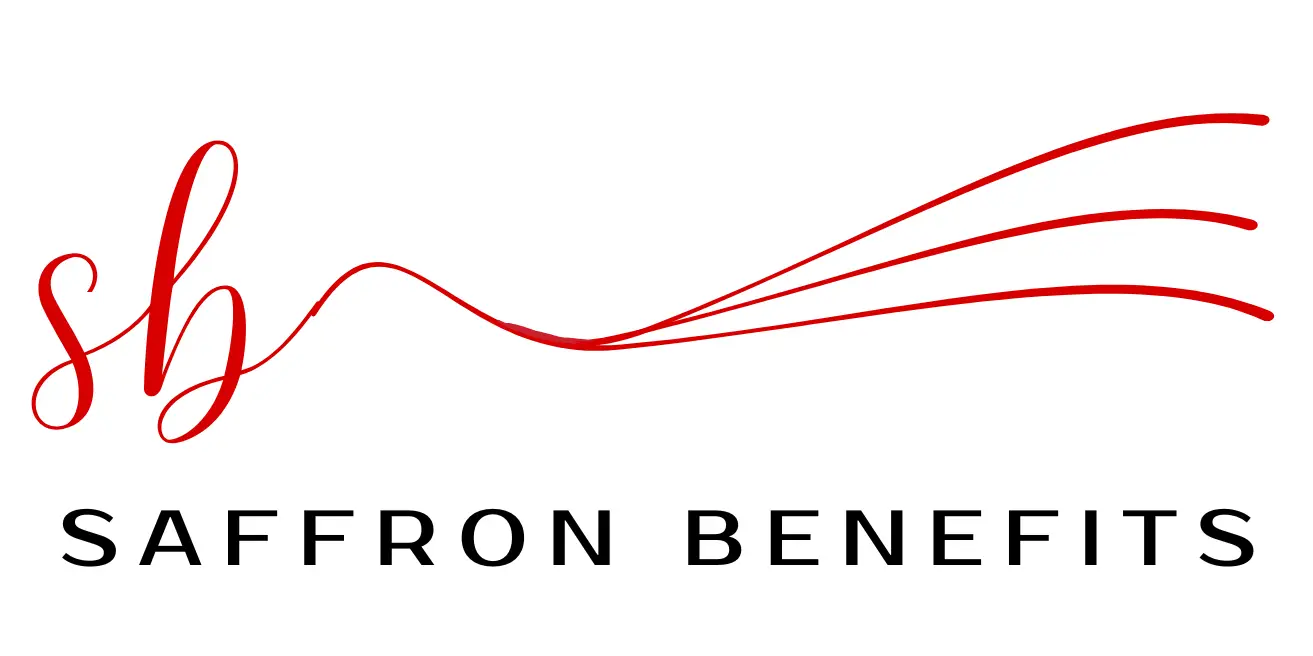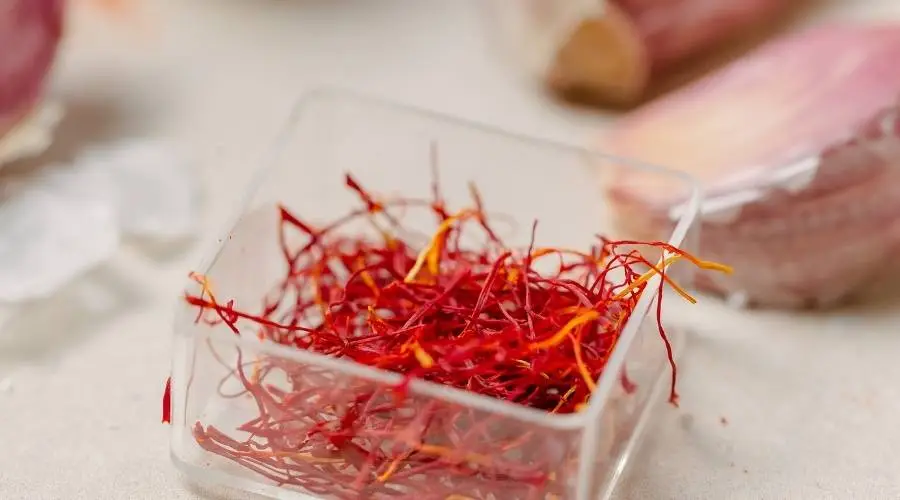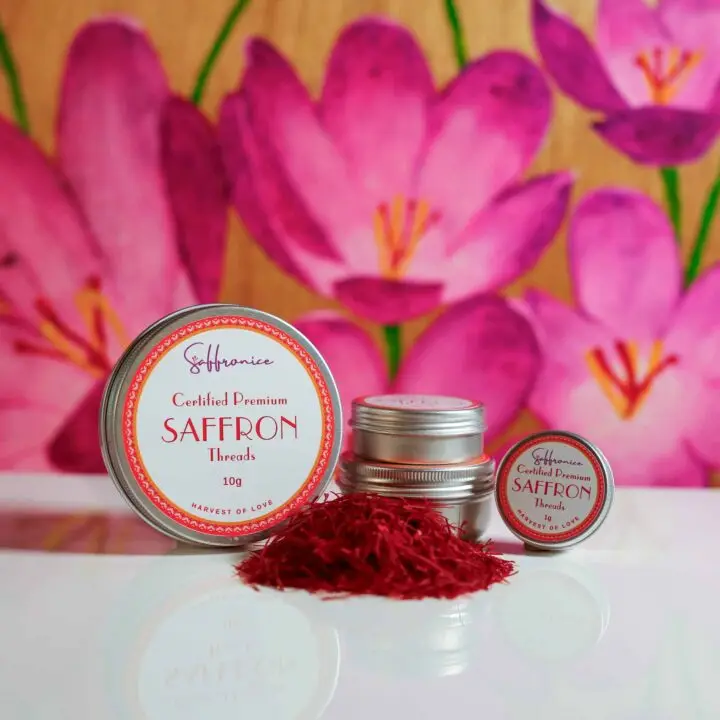📌 Quick Answer: Saffron myths range from ancient legends to modern misconceptions about the world’s most expensive spice. While some claims about saffron being “more valuable than gold” have a historical basis, many exaggerated stories persist. Scientific evidence supports saffron’s legitimate health benefits, but separating documented facts from folklore requires understanding both its remarkable properties and limitations.
Understanding Saffron’s True Value and Rarity
To separate saffron myths from reality, we must first understand what saffron is and why it commands such extraordinary prices. The spice comes from Crocus sativus, a flower that produces only three delicate stigmas per bloom.
The Botanical Reality
Crocus sativus is a sterile triploid plant, meaning it cannot reproduce naturally and requires human intervention for propagation. This biological limitation contributes to saffron’s scarcity, but the primary factor driving its value is the labor-intensive harvest process.
Harvesting Mathematics:
- Each flower yields 3 stigmas weighing approximately 0.007 grams
- 150-170 flowers produce 1 gram of fresh stigmas
- Fresh stigmas lose 80% of their weight when dried
- Therefore, 750-850 flowers are needed per gram of dried saffron
- One kilogram requires approximately 150,000-170,000 flowers
Understanding saffron cultivation reveals how these numbers translate into economic reality.
Price Comparison Reality Check
While saffron is indeed expensive, claims about its value must be examined carefully:
| Product | Price Range (USD per ounce) | Notes |
|---|---|---|
| Saffron (premium) | $150-300 | Varies by origin and quality |
| Gold | $2,000+ | Significantly more expensive than saffron |
| Caviar (Beluga) | $200-400 | Comparable to high-end saffron |
| Truffles (white) | $200-600 | Seasonal price variations |
Economic Reality: Modern saffron typically costs $5-15 per gram retail, making it expensive but not “more valuable than gold” as often claimed.
Labor Economics
The true driver of saffron’s cost lies in human labor requirements:
- Hand-harvesting: 150-200 hours per kilogram of dried saffron
- Skilled workers: Experience required for quality selection
- Seasonal constraints: 2-3 week harvest window annually
- Processing time: Additional hours for drying and sorting
Economist’s Note: Saffron’s price reflects genuine scarcity and labor costs rather than artificial market manipulation, distinguishing it from speculative luxury goods.
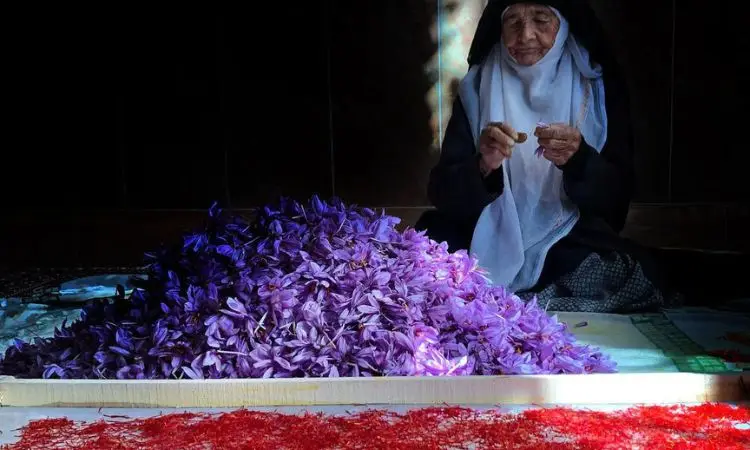
Ancient Origins and Historical Significance
The history and origins of saffron contain both documented facts and romanticized legends that require careful examination.
Documented Historical Evidence
Archaeological Evidence:
- Minoan frescoes from Akrotiri (1600-1500 BCE) showing saffron harvest
- Ancient Mesopotamian tablets mentioning saffron trade (2300 BCE)
- Egyptian papyri documenting medicinal uses (1550 BCE)
- Greek texts describing cultivation methods (400 BCE)
Factual Timeline:
- 3500+ years of documented cultivation and trade
- Spread from the Mediterranean to Persia, then globally
- Integration into multiple ancient civilizations
- Consistent high valuation across cultures
Historical Myths vs. Reality
Myth: Saffron was used in prehistoric cave paintings 50,000 years ago. Reality: While ochre and other pigments were used in prehistoric art, there’s no credible evidence of saffron use dating back 50,000 years
Myth: Cleopatra’s saffron baths used quarter-cups of saffron. In reality, while Cleopatra likely used saffron cosmetically, specific quantities in historical accounts are often exaggerated or unverifiable
Myth: Saffron was literally worth more than gold throughout history.Reality: During specific periods and locations, saffron may have exceeded gold prices, but this wasn’t consistent across all times and places
Verified Historical Applications
Ancient civilizations used saffron for:
- Textile dyeing and luxury garment coloring
- Medical treatments for various ailments
- Religious ceremonies and ritual offerings
- Culinary enhancement in elite households
- Artistic pigments for manuscripts and decorations
The Reality of Saffron Harvesting
Understanding actual saffron harvesting methods helps separate romantic myths from the practical realities of production.
The Labor-Intensive Process
Harvest Timing:
- Flowers bloom at dawn during the autumn months
- Optimal collection window: sunrise to 10 AM
- Stigmas must be removed within hours of blooming
- Weather conditions critically affect quality and timing
Physical Demands:
- Workers spend hours bent over low-growing plants
- Delicate manual dexterity is required for stigma removal
- Repetitive motions leading to physical strain
- Work continues regardless of weather conditions
Women’s Role in Production
Approximately 90% of saffron harvesting is performed by women, but this statistic requires context:
Economic Reality:
- Often reflects limited economic opportunities for women in rural areas
- Traditional knowledge passed through generations
- Seasonal employment provides crucial family income
- Physical demands are suitable for manual dexterity rather than strength
Modern Considerations:
- Fair trade initiatives addressing worker compensation
- Mechanization attempts were largely unsuccessful due to the delicacy requirements.
- Climate change is threatening traditional harvesting patterns
Harvesting Myths vs. Facts
Myth: Saffron harvest hasn’t changed in thousands of years. Reality: While basic hand-picking remains necessary, modern processing includes improved drying techniques, quality control, and packaging methods
Myth: Only women can harvest saffron properly. Reality: While women perform most harvesting, this reflects cultural and economic factors rather than inherent gender advantages
Myth: Saffron stigmas are too delicate to touch.h Reality: While delicate handling is required, stigmas are resilient enough for careful manual processing
Myths and Legends Throughout History
Saffron has inspired numerous saffron myths that blend historical facts with cultural storytelling and wishful thinking.
Middle Eastern Legends
Persian Mythology:
- Stories of saffron as a gift from the gods to humanity
- Legends of magical healing powers beyond medical reality
- Tales of saffron’s role in royal immortality quests
Reality Check: While saffron has documented medicinal properties, claims of magical or supernatural powers lack scientific evidence
Medieval European Folklore
Religious Associations:
- Monastic use in illuminated manuscripts
- Association with divine light and spiritual purity
- Integration into Christian ceremonial practices
Economic Legends:
- Stories of saffron piracy and smuggling
- Tales of merchants building fortunes solely on saffron
- Legends of saffron-based currencies
Historical Context: While saffron was indeed valuable, many stories about extreme measures to obtain it reflect the spice’s genuine scarcity rather than mystical properties
Ancient Greek and Roman Stories
Mythological Claims:
- Association with gods and divine favor
- Stories of saffron granting immortality or extraordinary beauty
- Tales of saffron’s role in love potions and magical ceremonies
Archaeological Evidence: Greek and Roman texts document saffron’s use in perfumes, medicine, and luxury goods, but mythological claims lack historical support
Modern Myth Perpetuation
Contemporary marketing and popular culture continue spreading exaggerated saffron claims:
- Unsupported assertions about ancient pricing
- Romanticized stories about traditional harvesting
- Exaggerated claims about rarity and exclusivity
- Misleading comparisons to precious metals and gems
Scientific Chemistry Behind Saffron’s Properties
Understanding saffron’s legitimate health benefits requires examining scientific evidence rather than relying on traditional claims.
Active Chemical Compounds
Primary Bioactive Compounds:
Crocin (Color Compound):
- Responsible for the golden-yellow color
- Powerful antioxidant properties documented in studies
- Water-soluble carotenoid with potential health benefits
- Concentration varies significantly by origin and processing
Safranal (Aroma Compound):
- Creates a distinctive saffron fragrance
- Potential mood-regulating properties under investigation
- Volatile compound sensitive to storage conditions
- Research is ongoing for neurological applications
Picrocrocin (Flavor Compound):
- Contributes to saffron’s bitter taste
- Converts to safranal during the drying process
- Potential therapeutic properties being studied
- Quality indicator for authentic saffron
Evidence-Based Health Claims
Scientifically Supported Benefits:
- Mild antidepressant effects in clinical trials
- Antioxidant activity measured in laboratory studies
- Potential eye health benefits under investigation
- Anti-inflammatory properties documented in research
Unsupported Claims:
- Cure for serious diseases or conditions
- Magical or supernatural healing powers
- Guaranteed weight loss or beauty enhancement
- Universal remedy for all health problems
Research Limitations
Scientific Cautions:
- Most studies involve small sample sizes
- Long-term effects require additional research
- Optimal dosages are not definitively established
- Individual responses vary significantly
- The quality of saffron used in studies matters
Botanist’s Note: While saffron contains genuine bioactive compounds with measurable effects, extraordinary health claims require extraordinary evidence that current research doesn’t fully provide.
Global Production and Market Realities
Current saffron production leaders reveal the economic and geographic realities behind saffron cultivation.
Production Statistics
Global Production (Annual):
- Iran: 400-450 tons (85-90% of world production)
- India (Kashmir): 15-20 tons (declining due to climate factors)
- Greece: 3-5 tons (premium quality, limited quantity)
- Spain: 1-2 tons (traditional European producer)
- Other regions: <1 ton collectively
Market Economics
Price Factors:
- Origin and quality grade
- Seasonal harvest variations
- International trade policies
- Currency exchange rates
- Consumer demand fluctuations
Economic Myths:
- Myth: Saffron prices only increase
- Reality: Prices fluctuate based on harvest conditions, political factors, and market demand
- Myth: All saffron is equally expensive
- Reality: Significant price variations exist based on grade, origin, and quality
Regional Quality Differences
Iranian Saffron:
- High volume production
- Consistent quality standards
- Competitive pricing
- Various grades available
Kashmiri Saffron:
- Premium quality reputation
- Limited production quantities
- Higher prices than Iranian varieties
- Geographic indication protection
European Saffron:
- Small-scale artisanal production
- Premium positioning
- Higher labor costs are reflected in pricing
- Traditional cultivation methods
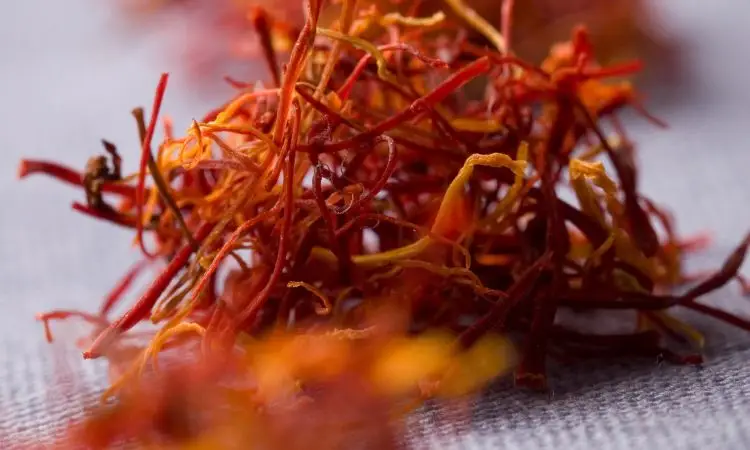
Climate Change Impact on Saffron Cultivation
The reality of climate change effects on sustainable saffron farming contradicts myths about saffron’s resilience.
Environmental Challenges
Documented Climate Impacts:
- Kashmir: 70% yield reduction from 2017-2018
- Spain: Production decreased from 140 tons (1920s) to 0.45 tons (2022)
- Iran: Increasing water scarcity is affecting traditional growing regions
- Greece: Temperature variations disrupting flowering cycles
Adaptation Strategies
Modern Agricultural Approaches:
- Drought-resistant cultivation techniques
- Alternative growing region exploration
- Improved irrigation systems
- Climate-controlled processing facilities
Future Production Scenarios
Realistic Projections:
- Traditional regions may become unsuitable for cultivation
- New growing areas are being developed and tested
- Technology integration improves efficiency and quality
- Sustainable farming practices are becoming essential
Myth vs. Reality:
- Myth: Saffron will always be produced in traditional regions
- Reality: Climate change is forcing geographical shifts in production
- Myth: Traditional methods are always best
- Reality: Modern techniques may be necessary for survival and sustainability
Traditional Uses Beyond Cooking
Historical saffron cultural significance extends beyond culinary applications, though some claims require verification.
Documented Traditional Applications
Textile Dyeing:
- Historical evidence of saffron-dyed fabrics
- Royal garments and ceremonial clothing
- Buddhist monk robes (though other dyes are also used)
- Luxury textile production
Religious and Ceremonial Uses:
- Hindu and Buddhist temple offerings
- Islamic ceremonial applications
- Christian manuscript illumination
- Various cultural festivals and celebrations
Medicinal Traditions:
- Ancient medical texts documenting therapeutic uses
- Traditional medicine systems incorporating saffron
- Folk remedies passed through generations
- Limited scientific validation of traditional claims
Examining Traditional Claims
Verified Uses:
- Natural dye for textiles and art
- Aromatic enhancement in perfumes and cosmetics
- Cultural and religious symbolism
- Traditional medicine ingredient (effectiveness varies)
Questionable Claims:
- Universal healing properties
- Magical or supernatural effects
- Guaranteed beauty enhancement
- Protection against all diseases
Quality Authentication and Avoiding Counterfeits
Understanding how to spot the difference between real vs fake saffron protects consumers from fraudulent products.
Authentication Methods
Visual Inspection:
- Deep red color with minimal yellow or white portions
- Thread-like structure with a slight trumpet shape at the ends
- Consistent size and appearance
- No artificial coloring or foreign materials
Aroma Testing:
- Sweet, hay-like fragrance
- Distinctive, pleasant scent
- No harsh or chemical odors
- Aroma intensity indicating freshness
Water Test:
- Gradual golden color release in warm water
- Threads maintain structure when wet
- No immediate artificial coloring
- Clear water initially, then golden development
Common Counterfeits
Frequent Adulterants:
- Dyed corn silk or safflower threads
- Turmeric powder mixed with genuine saffron
- Artificial coloring agents
- Paper or plastic strips
Purchasing Guidelines
Reliable Sources:
- Reputable spice dealers with quality certifications
- Direct importers from producing regions
- Retailers offering authenticity guarantees
- Suppliers providing origin documentation
Understanding where to buy saffron online helps consumers locate trustworthy vendors while avoiding fraudulent products.
Price Reality:
- Extremely low prices likely indicate counterfeit products
- Authentic saffron requires significant investment
- Quality certifications are worth premium pricing
- Bulk purchasing may offer legitimate savings
Modern Research and Applications
Current science-backed saffron benefits research provides evidence-based information about saffron’s properties and limitations.
Clinical Research Findings
Depression and Mood:
- Several clinical trials have shown mild antidepressant effects
- Dosages of 30mg daily in controlled studies
- Effects comparable to some conventional treatments
- More research is needed for long-term outcomes
Eye Health:
- Studies investigating age-related macular degeneration
- Potential benefits for retinal health
- Limited sample sizes require larger studies
- Promising preliminary results
Antioxidant Activity:
- Laboratory studies confirming antioxidant properties
- Cellular protection in test-tube studies
- Animal studies showing protective effects
- Human applications requiring additional research
Research Limitations
Study Constraints:
- Small sample sizes in many trials
- Short-term studies predominating
- Varying quality of saffron used in research
- Limited control group comparisons
- Geographic and demographic limitations
Contemporary Applications
Culinary Innovation:
- Molecular gastronomy incorporating saffron
- Fusion cuisine applications
- Artisanal food product development
- Premium restaurant applications
Pharmaceutical Research:
- Standardized extract development
- Quality control improvements
- Therapeutic dosage investigations
- Safety profile studies
Future Research Directions
Promising Areas:
- Neurodegenerative disease applications
- Cancer research (preliminary stages)
- Cardiovascular health studies
- Mental health applications
Research Needs:
- Larger, longer-term clinical trials
- Standardized extract protocols
- Dosage optimization studies
- Safety and interaction research
Market Trends and Economic Reality
Current saffron market trends reveal the economic forces shaping contemporary saffron commerce.
Global Market Dynamics
Supply Factors:
- Iranian dominance is affecting global pricing
- Climate change is reducing traditional production
- Quality variations influencing market segmentation
- Political factors affecting international trade
Demand Drivers:
- Growing interest in premium natural ingredients
- Culinary tourism is increasing saffron awareness
- Health-conscious consumers seeking natural products
- Luxury food market expansion
Price Trends
Market Reality:
- Wholesale prices: $1,500-3,000 per kilogram
- Retail prices: $5-15 per gram
- Premium varieties: $20-50 per gram
- Significant price volatility based on harvest conditions
Quality Standards
Understanding saffron quality standards helps consumers make informed purchasing decisions while recognizing legitimate quality differences.
Grading Systems:
- ISO classification standards
- Regional quality designations
- Commercial grade categories
- Premium quality indicators
Conclusion
Saffron myths often arise from the spice’s genuinely remarkable properties and extraordinary production requirements. While saffron is indeed rare, expensive, and possesses documented beneficial compounds, separating facts from folklore requires critical examination of claims and evidence.
The reality is that saffron deserves its reputation as a premium spice due to labor-intensive harvesting, limited growing regions, and unique sensory properties. However, many exaggerated claims about its value, rarity, and effects persist in popular culture and marketing materials.
Modern scientific research increasingly validates some traditional uses while debunking others. Contemporary challenges, including climate change, quality authentication, and market volatility, create new realities that differ from historical patterns.
Understanding both the genuine qualities and limitations of saffron allows consumers to appreciate this remarkable spice while making informed decisions about purchase, use, and expectations. The truth about saffron is fascinating enough without embellishment or exaggeration.
For comprehensive information about saffron’s authentic properties and applications, explore our detailed guide ot saffrons to discover the remarkable reality behind the myths and legends.
FAQ
Is saffron really more valuable than gold?
While historical periods may have seen saffron prices exceed gold temporarily, modern saffron typically costs $5-15 per gram compared to gold at $60+ per gram. The “more valuable than gold” claim is largely a historical anecdote rather than a current reality.
Do you really need 75,000 flowers to make one pound of saffron?
This frequently cited number is inaccurate. Approximately 150,000-170,000 flowers are required for one kilogram (2.2 pounds) of dried saffron, making the actual number around 68,000-77,000 flowers per pound – close to but not exactly 75,000.
Can saffron cure depression or serious diseases?
While clinical studies show saffron may have mild antidepressant effects and antioxidant properties, it’s not a cure for depression or serious diseases. Any therapeutic use should complement, not replace, professional medical treatment and consultation.
Why is Kashmir saffron so expensive compared to Iranian saffron?
Kashmiri saffron commands premium prices due to limited production, geographic indication protection, longer stigmas, and perceived superior quality. However, Iranian saffron often offers better value for culinary applications with comparable quality at lower prices.
Are all the stories about ancient saffron use true?
Many ancient saffron stories blend documented historical use with cultural mythology and exaggerated claims. While saffron was indeed valued in ancient civilizations, specific details like Cleopatra’s saffron bath quantities or prehistoric cave painting use often lack credible historical evidence.
How can I tell if my saffron is real or fake?
Authentic saffron has deep red threads with trumpet-shaped ends, a sweet hay-like aroma, and releases a golden color gradually in warm water while maintaining its thread structure. Fake saffron often uses dyed corn silk, dissolves immediately with artificial coloring, or has harsh chemical odors.
